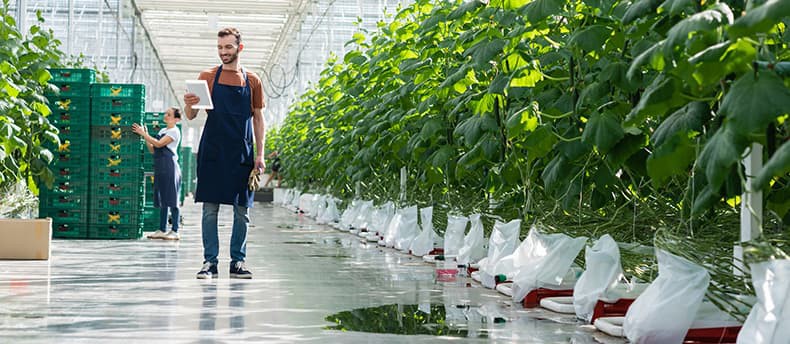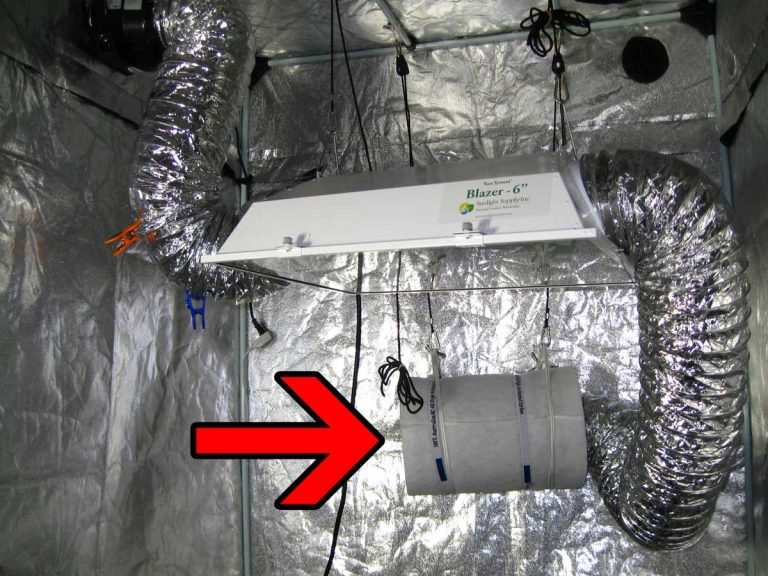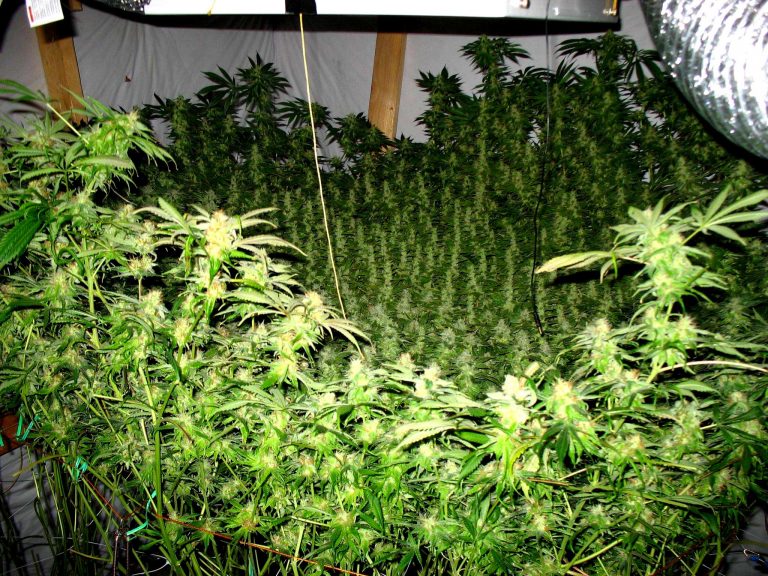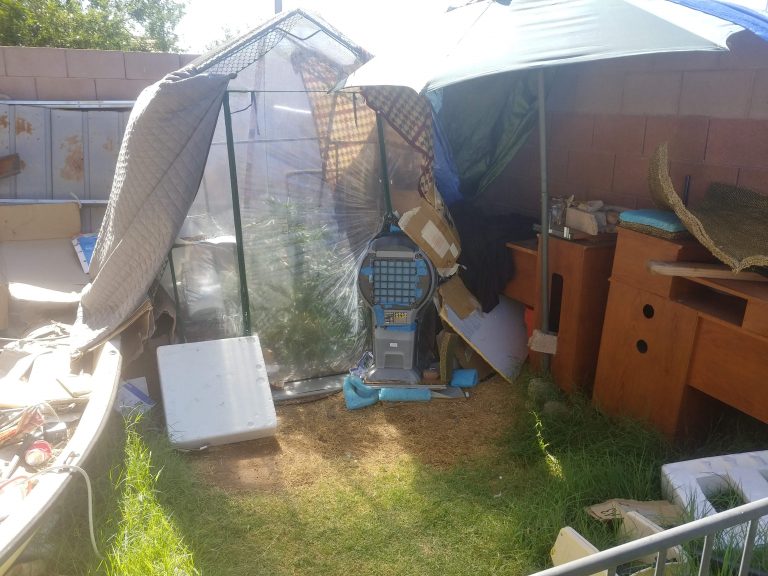How to Control Temperature And Humidity in Grow Tent
A grow tent is an enclosed space where plants are grown. The tent allows you to control the temperature and humidity, which are important factors in plant growth. By controlling the temperature and humidity, you can create a more optimal growing environment for your plants.
There are a few things you can do to control the temperature and humidity in your grow tent. First, make sure that your tent is well-ventilated. You can do this by opening the vents or windows in the tent.
This will allow air to circulate and keep the inside of the tent from getting too hot or too cold. Second, use a fan to circulate air inside the tent. This will help to even out the temperature and keep the air moving.
Third, consider using a humidifier or dehumidifier to control the amount of moisture in the air. These devices can help to maintain a consistent level of humidity, which is important for plant growth. Finally, monitor the temperature and humidity levels inside your grow tent so that you can make adjustments as needed.
- Get a grow tent that is big enough for your plants
- Put a fan in the grow tent to circulate the air
- Get an air conditioner for the grow tent if the temperature gets too hot
- Get a humidifier for the grow tent if the humidity gets too low
Controlling your humidity and temperature for indoor cannabis
How Do You Control Humidity in a Grow Tent When the Lights are Off?
If you’re growing plants in a grow tent, you may need to control the humidity level inside the tent. This is especially true if you’re using high-powered lights, which can create a lot of heat and dry out the air.
There are a few different ways to control humidity in a grow tent.
One way is to use a humidifier. This will add moisture to the air and help keep your plants healthy. You can also use a dehumidifier to remove excess moisture from the air.
If you live in an area with high humidity, you may need to use both a humidifier and dehumidifier to keep the level inside your grow tent consistent.
Another way to control humidity is by ventilation. By opening or closing vents, you can let more or less air into the tent.
This will help regulate the temperature and humidity levels inside the tent.
Finally, you can also control humidity by controlling the amount of water your plants are getting. Overwatering can lead to mold and mildew, so it’s important to only water your plants when they need it.
Letting them get too dry will also damage their leaves, so it’s important to find that happy medium between too much and too little water.
By following these tips, you should be able to keep the humidity levels in your grow tent under control even when the lights are off!
How Do You Keep the Humidity Constant in a Grow Tent?
If you’re growing plants indoors in a grow tent, you need to pay attention to the humidity level inside the tent. Too much or too little humidity can stress your plants and affect their growth. So how do you keep the humidity constant in a grow tent?
There are a few things you can do to maintain consistent humidity levels in your grow tent:
1. Use a humidifier: A humidifier can help increase the humidity level inside your grow tent. You can find humidifiers specifically designed for use with grow tents.
2. Use a dehumidifier: If the air inside your grow tent is too moist, you can use a dehumidifier to remove some of the excess moisture from the air. Dehumidifiers also come in sizes specifically designed for use with grow tents.
3. Ventilation: Good ventilation is important for regulating the humidity level in your grow tent.
Make sure your venting fans are properly sized for yourgrow room size and that they’re running at the right speed to exchange fresh air without causing drastic changes in temperature or humidity levels.
How Do I Regulate the Temperature on My Grow Tent?
If you’re growing plants indoors in a grow tent, one of the most important things you can do is to regulate the temperature inside the tent. Here are a few tips on how to do that:
1. Use an air conditioner or fan: If it’s hot outside, use an air conditioner or fan to help cool down your grow tent.
2. Make sure there’s good ventilation: Good ventilation is key for regulating temperature in a grow tent. Make sure there are vents at the top and bottom of the tent, and that they’re not blocked by anything.
3. Use a thermometer: A thermometer will help you keep track of the temperature inside your grow tent so that you can make adjustments as needed.
4. Don’t let the sun hit directly on the tent: If possible, try to keep the sun from hitting directly on the grow tent. This will help prevent it from getting too hot inside.
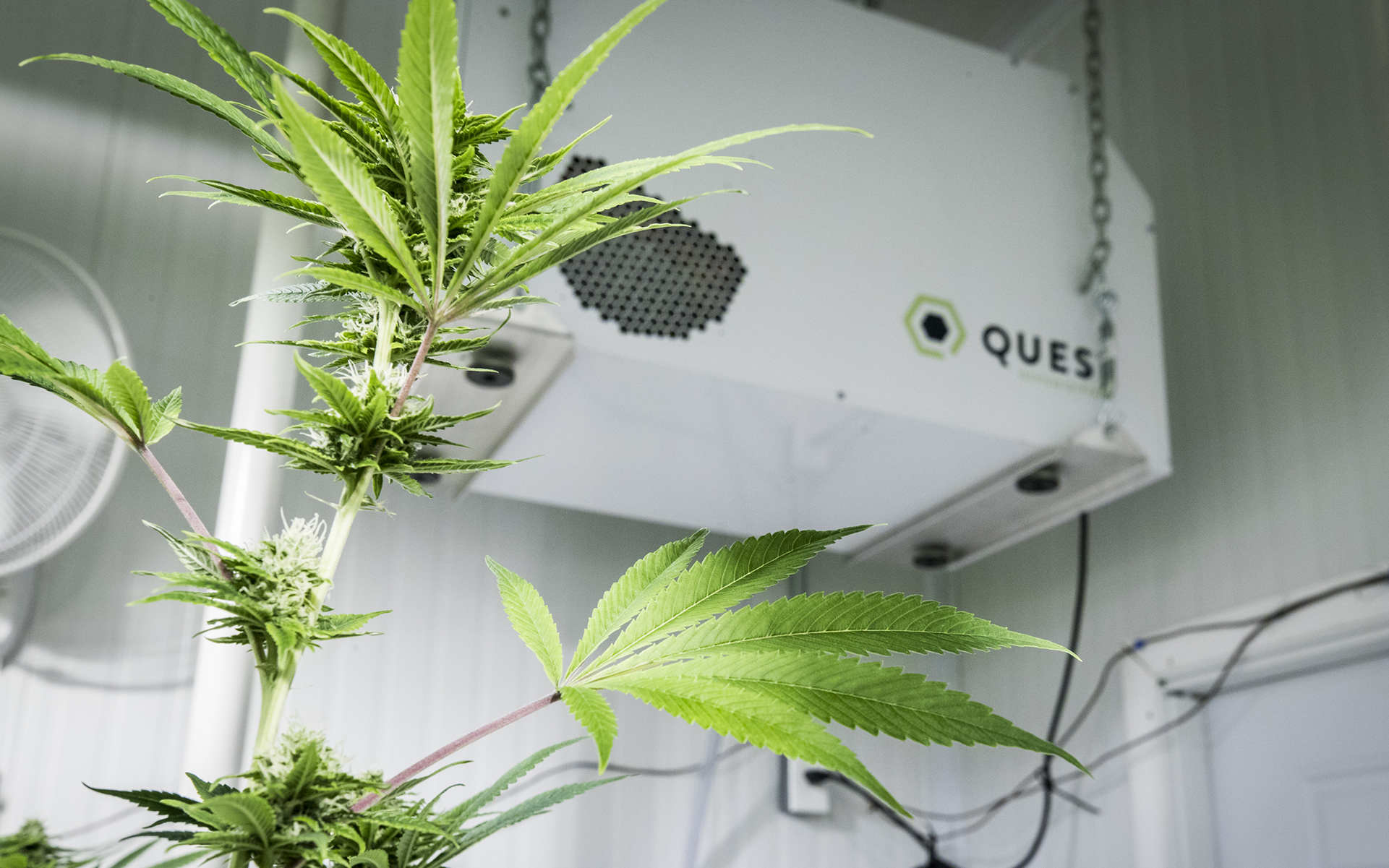
Credit: www.leafly.com
How to Control Temperature in Grow Tent
If you are growing plants indoors, then you need to be aware of the temperature in your grow tent. The ideal temperature for most plants is between 70-80 degrees Fahrenheit. If the temperature gets too hot or cold, it can stress the plant and cause problems with growth.
Here are some tips on how to control the temperature in your grow tent:
1) Place a fan near the top of the tent to help circulate air and keep the temperatures down.
2) Make sure that you have proper ventilation so that hot air can escape and cooler air can enter.
3) Use a thermometer to monitor the temperature inside the grow tent. This will help you make adjustments as needed.
4) If it gets too hot, you can open up the door or windows of the grow room to let heat out.
Just be sure to close them back up when the temperatures start to drop again.
5) In extreme cases, you may need to use an air conditioner or heater to maintain optimal temperatures. However, this should only be done as a last resort as it can be expensive and may not be necessary if other measures are taken first.
Automatic Humidity Control for Grow Tent
Automatic humidity control for grow tents is an important aspect of indoor gardening. By controlling the amount of moisture in the air, you can create a more stable environment for your plants. There are a few different ways to do this, but one of the most effective is to use a dehumidifier.
Dehumidifiers work by pulling moisture out of the air and storing it in a tank. This helps to lower the overall humidity in your grow tent, which can make a big difference in plant growth. You’ll want to choose a dehumidifier that’s sized appropriately for your space and has enough capacity to handle the amount of moisture you’re dealing with.
In addition to using a dehumidifier, you can also take steps to improve air circulation in your grow tent. This will help to remove excess moisture from the air and prevent it from settling on your plants. One way to do this is by installing an exhaust fan near the top of your tent.
This will draw moist air out of the space and help keep things dry inside.
Taking these steps will go a long way toward keeping your grow tent at optimal humidity levels for plant growth. By controlling the amount of moisture in the air, you can create a more stable environment that’s ideal for healthy plant development.
How to Lower Humidity in Grow Tent Without Dehumidifier
If you’re growing plants in a grow tent, chances are you’re going to need to control the humidity levels at some point. The good news is that there are a few ways to lower humidity in your grow tent without using a dehumidifier.
One way to lower the humidity in your grow tent is by venting it out.
You can do this by opening up the doors or windows of your grow tent, or by using an exhaust fan. If you have an exhaust fan, make sure that it’s pointing outside so that the humid air doesn’t get trapped inside your grow tent.
Another way to lower the humidity in your grow tent is by using a desiccant packet.
Desiccant packets are made of materials that absorb moisture from the air. You can usually find them at your local hardware store or online. Just place one or two packets inside your grow tent and they should help to lower the humidity levels.
Finally, you can also try using a hygrometer to measure the humidity levels inside your grow tent. By doing this, you’ll be able to see how effective each of these methods is at lowering the humidity levels and adjust accordingly.
How to Increase Humidity in Grow Tent
If you are growing plants indoors in a grow tent, you may need to increase the humidity at some point. There are a few ways to do this:
1. Use a humidifier – This is the most common and effective way to increase humidity in a grow tent.
You can buy a stand-alone humidifier or one that attaches to your water hose. Just make sure the humidifier is big enough for the size of your grow tent.
2. Boil water on the stove – This method is quick and easy, but it will only work for a short period of time.
Boil a pot of water on the stove and then place it inside your grow tent. The steam will help to increase the humidity levels.
3. Hang wet towels inside the grow tent – This is another quick and easy method, but it will also only work for a short period of time.
Wet several towels and hang them around your grow tent. The evaporating water will help to raise the humidity levels inside the tent.
4. Place plants close together – When plants are close together, they release moisture into the air which can help to raise the overall humidity level in your grow room or tent.
Just be careful not to overcrowd your plants so that they don’t get too stressed out!
Night Time Humidity in Grow Room
If you’re a grower, you know that humidity is important. Too much and your plants will start to mildew; too little and they’ll dry out and become stressed. But what many growers don’t realize is that humidity levels can vary significantly between day and night.
During the day, when your lights are on and your plants are actively growing, humidity levels will tend to be lower. This is because the air is being circulated more by the fans and because the plants are transpiring (releasing water vapor into the air).
At night, however, things change.
The lights are off, the fans are off, and the plants are not transpiring as much. This allows the humidity to build up, which can create problems if it gets too high.
Too much humidity at night can lead to mold and mildew growth on your plants or on your grow room surfaces.
It can also encourage pests like mites or fungus gnats to proliferate. And high humidity can cause condensation on your windows, which can lead to water damage over time.
So what’s the best way to deal with nighttime humidity?
The first step is to make sure that your grow room is well-ventilated so that air can circulate properly. You may need to add additional fans or vents if you’re having trouble keeping things comfortable at night.
You should also consider running a dehumidifier in your grow room during the daytime hours when conditions are drier.
This will help remove excess moisture from the air so that it doesn’t have a chance to build up overnight. Just be sure not to run it too often or you could end up drying out your plants!
Controlling Humidity
As the weather gets warmer, many of us start to think about ways to keep our homes cool and comfortable. One way to do this is by controlling the humidity levels in our homes.
Humidity is the amount of water vapor present in the air.
When the air is saturated with water vapor, we say it is “humid.” The higher the humidity, the more uncomfortable it can feel because our bodies have a harder time cooling themselves through evaporation.
There are a few different ways to measure humidity.
The most common is relative humidity, which is a measure of how much water vapor is in the air compared to how much water vapor the air can hold at that temperature. Another way to measure humidity is dew point, which is the temperature at which water vapor will condense into liquid form.
There are a few different ways to control humidity in your home:
1) Use an air conditioner – An air conditioner cools and dehumidsifies the air as it circulates through your home.
2) Use a humidifier – A humidifier adds moisture to dry indoor air.
3) Ventilate – Opening doors and windows or using exhaust fans helps circulate fresh outdoor air throughout your home while also getting rid of stuffy indoorair.
4) Take shorter showers – This one might be difficult during summer heat waves! But try showering quickly with cold or lukewarm water instead of hot water to help reduce indoor humidity levels
By following these tips, you can help keep your home cool and comfortable all summer long!
30 Humidity in Grow Room
If you’re growing indoors, you need to be aware of the humidity in your grow room. Too much or too little humidity can both lead to problems with your plants. The ideal range for most plants is between 30-50% relative humidity.
If your grow room is too humid, it can create an environment that is conducive to mold and mildew growth. This can ruin your crops and make them unsafe to consume. Additionally, high humidity levels can cause leaf drop and impede plant growth.
If you notice any of these problems, take steps to lower the humidity in your grow room.
On the other hand, if your grow room is too dry, it can cause leaves to wither and die back. It can also increase the risk of pests and diseases attacking your plants.
If you notice any of these problems, take steps to raise the humidity in your grow room.
There are a few different ways that you can adjust the humidity in your grow room. One option is to use a humidifier or dehumidifier.
Another option is to adjust the ventilation in your space. By opening or closing vents, you can let more or less outside air into the space which will affect the overall humidity level.
No matter what method you choose, monitoring the humidity levels in your grow room is essential for keeping your plants healthy and happy!
Conclusion
If you want to maintain control of the temperature and humidity in your grow tent, there are a few things you can do. By using a fan and regulating the amount of ventilation in your tent, you can help keep the air moving and prevent any hot spots from forming. Additionally, using a humidifier or dehumidifier can help you keep the relative humidity at the levels you need it to be.
By monitoring the temperature and humidity levels inside your grow tent, you can make sure that your plants are getting the ideal environment for growth.
